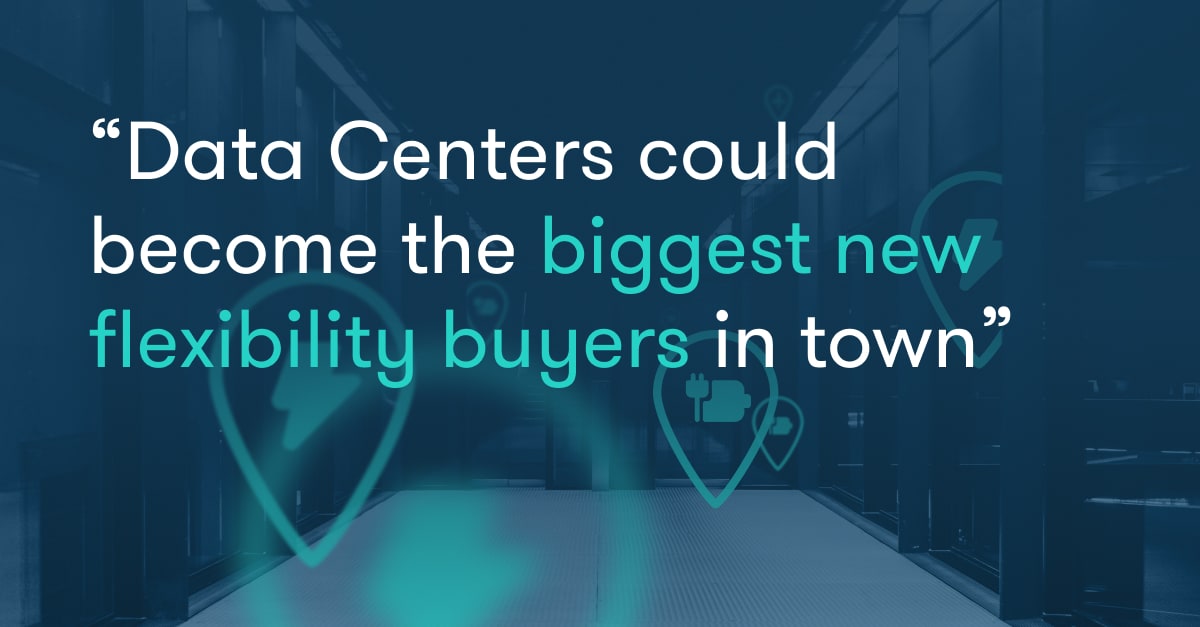Everyone’s Talking About Data Center Flex. Nobody’s Talking About Clubbing


Data centers are emerging as flexible loads, but they could also procure local flexibility from clubs of Virtual Power Plants. This “clubbing” model strengthens communities, lowers costs, relieves grid constraints, and enhances resilience.
Much of today’s discussion on AI and power focuses on how data centers themselves can act as sources of flexibility. Duke University’s flagship report Rethinking Load Growth kicked off this new flexibility category, outlining the huge opportunity in tapping into compute flexibility, shifting workloads, and using on-site assets like batteries and UPS systems. Hyperscalers are already moving in this direction - Google’s agreements with TVA and Indiana & Michigan show that compute can be dispatched just like a generator. Startups like Emerald AI recently announced over-subscribed seed rounds. Articles reinforcing this trend are popping up everywhere, E&E News “How Data Centers Can Learn to Turn Off and Help the Grid”, Heatmap “AI’s Flexible Loads”, and Economist “How big tech plans to feed AI’s voracious appetite for power”. The industry is treating data centers as the next great flexible load.
That’s all good news. But there’s another model we should be exploring too.
Instead of only focusing behind the meter, data centers could procure flexibility and resource adequacy from third parties through local Virtual Power Plants (VPPs) or “clubs” of distributed energy resources (DERs). The key is ensuring these resources are situated locally, so they do two jobs at once:
- Provide the data center with the firmness it needs
- Relieve the exact feeder or substation constraints that often delay new interconnections
This means a data center doesn’t just become a large consumer, it becomes a partner in local reliability.
How VPP Clubbing could work
Setup
- The data center runs a procurement process to prequalify potential VPPs
- The utility verifies the location of the DER assets
- A neutral marketplace manages the data sharing and verification between the three parties (Data center, VPPs, utility)
Operations
- A utility forecasts a local constraint or issues a stress alert
- The data center issues a call for flexibility to DER within its local zone
- VPPs bid capacity, duration, and price.
- The Data Center compares VPP bids to its own on-site options. If external bids are cheaper or less disruptive, it accepts them.
- A neutral marketplace verifies delivery and ensures utility acceptance of the off-site options in lieu of on-site flex
In effect, the Data Center is buying Flex-as-Firmness from its neighbors.
Advantages of this approach:
- Scalable: over 60 GW of available demand flexibility in the USA, with a further 140 GW of potential capacity (Brattle)
- Competitive: priced based on who is best placed to deliver the service at that moment, ensuring a lowest-cost, market-based outcome
- Resource Adequacy potential: aggregated DERs can also deliver accredited resource adequacy, the Data Center procures both local relief and system capacity
- Community value: strengthens local energy ecosystems, rather than walling power away behind a fence
- Protecting compute for critical services: by sourcing flexibility externally, Data Centers can keep their compute resources focused on essential or even grid-supporting applications - ironically the very workloads that may help keep the grid stable during stress
Challenges to solve:
- Complexity: it involves more actors that need to coordinate
- Verification: must prove that DERs responded in the right place at the right time
- Utility role: dispatch and integration rules need to be clear
- Market maturity: few regions enable this kind of local flex contracting
- Trust and privacy: needs an independent marketplace operator to manage bids and data
Data Centers as both buyers and sellers of flexibility
The current debate casts data centers as either problems (too much load) or partial solutions (flexing their own assets). The VPP/club approach reframes them as partners: procuring flexibility from others, relieving local grid constraints, and helping the system scale faster.
Data centers will certainly become giant new flex providers in their own right. But they could also become the biggest new buyers in town - purchasing flexibility and resource adequacy from local ecosystems. If we open up flexibility markets to this model, the lowest-cost portfolio - whether on-site, off-site, or compute - will win. That’s how AI grows without breaking the grid.

